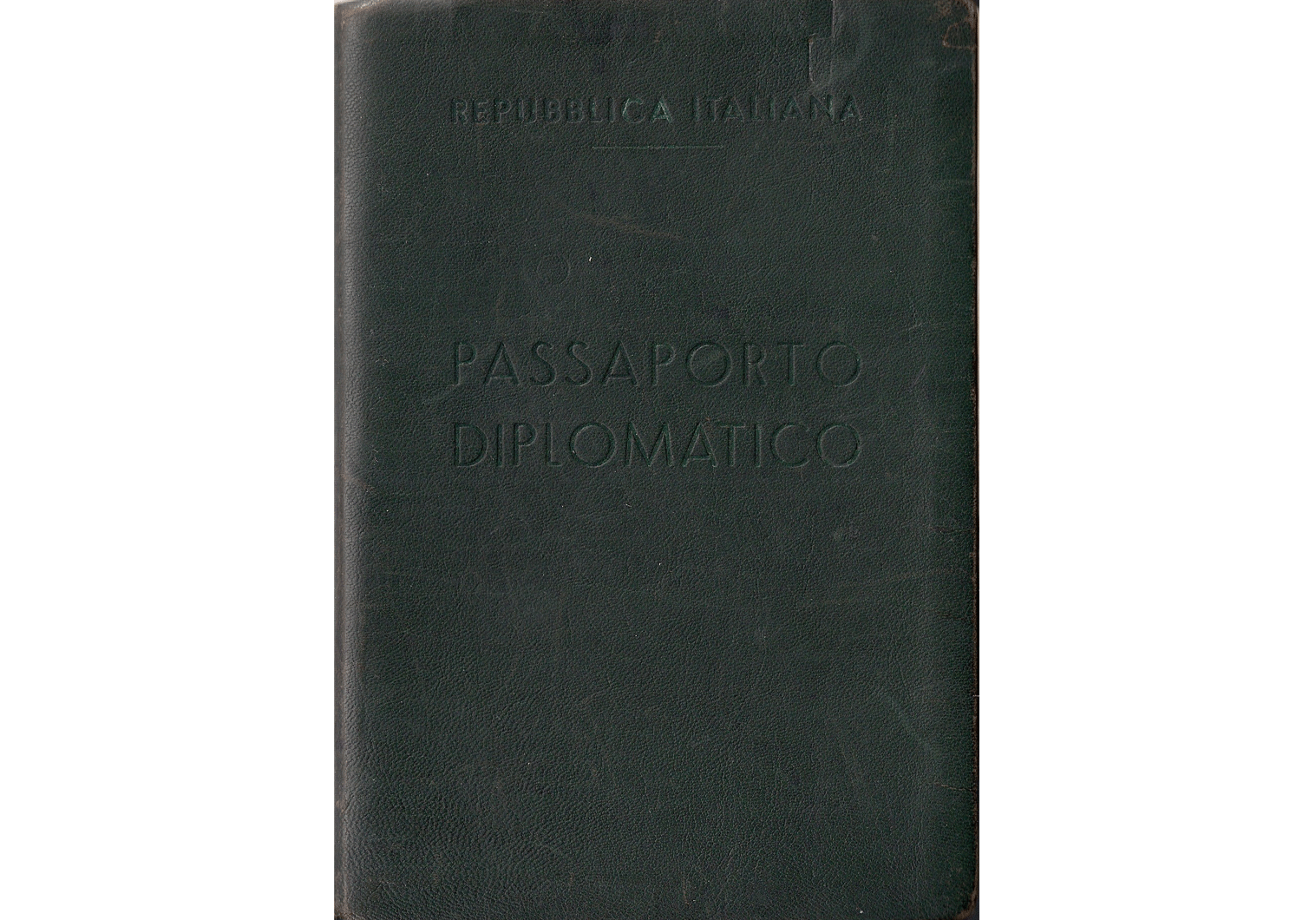Post-war superb diplomatic passport
1947 issue for an attaché stationed in Moscow.
Much has been written regarding Italy’s 20th Century’s “follies”, starting with a totalitarian fascist regime that was established following Benito Mussolini’s march on Rome of 1922, the aligning of one’s country with Nazi Germany and the declaration of war against the west in 1940. All these events culminated with founding of the Italian Socialist Republic in 1943, a puppet state of Germany and the execution of its leader, Mussolini, at the end of the war in April 1945.
Post-war Italy saw the abolishment of the Monarchy following a popular election that was held on June 2nd 1946 and with a new Italian constitution put into place in January of 1948 saw a fresh new parliamentary election for later on that year. From a totalitarian pre-war and war time regime Italy moved to a government with a mixture of parties: Christian Democrats, Socialists and the Communists. Other important post-war time events that had great ramifications for Italy and the region were the 1947 Paris Peace Treaties that ended the Italian colonial empire, settled border disputes and the payment of reparations to the USSR, Yugoslavia and Greece.
The internal situation of the country was as important as its international position and the development or re-establishing of proper ties with the outside world. Post-war Italy moved closer to the west and with massive US financial aid (Marshal Plan), Italy was put on the right track of economical recovery. With a pro-western parliament government, Italy’s position internally and internally looked very positive and such was the case in the coming years.
The passport in this article can be considered as one of the earliest to be issued post-war for a diplomat to be stationed in the Soviet Union. After the war Italy was in international isolation due to its actions during the war, regardless of its “changing sides” in 1943. The 1947 Peace Treaties signaled the end of the isolation and the acceptance, though slow, of Italy back into the international family. Thus, the passport here can be seen as the strengthening of its diplomatic mission abroad following the outcome of WW2.
Diplomatic passport number 429 was issued at Rome to Fernando Scorretti, attaché, being sent to the Italian embassy in Moscow. By that year he had already a diplomatic career, but not a rich one going back to pre-war years. His first diplomatic posting was to the Fascist Italian consulate at Sion, Switzerland in 1942 as secretary (he had already been living in that city since before the war but not at an official capacity). His regular passport (number 738226 registered as number 8) that was issued to him on January 5th 1938 was amended to a “REGIO SERVIZIO” (Royal Service) passport on October 15th 1942 by the consul at Sion. He remained in that city up to the end of 1946, then returning, again, back to Italy where we can assume he was appointed to his next and first post-war posting to the Soviet Union and this time as an attaché.
The passport has extensive diplomatic visas taking the holder into and from the following countries:
Soviet Union, Finland, Sweden, Denmark, occupied Germany, Pakistan and even Afghanistan (early diplomatic visas from this country are exceptionally rare thus making this document an exquisite find indeed!); the entry and exit out of the country was done via the joint border crossing at Torkham, see pages 26-27 for example.
Attaché Scorretti used his diplomatic passport from 1947 up to the end of 1949, returning back to Italy via the Chiasso border crossing with Switzerland on November 21st.
I have added images of this Italian Diplomatic passport, one of the earliest post monarchial samples that I have seen to date. I hope you enjoy the images.
Thank you for reading “Our Passports”.


















